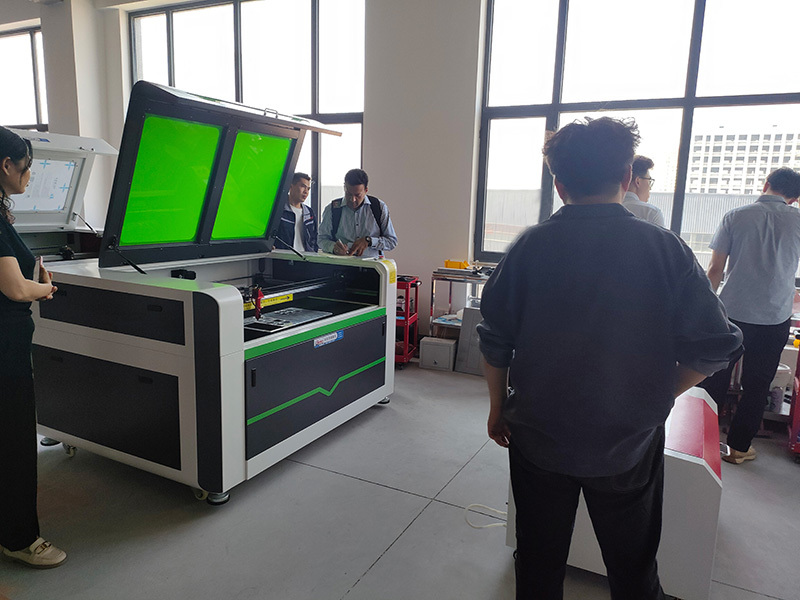When using metal cutting, the following factors must be considered comprehensively
Release time:
Jul 17,2024
In ancient times, China, India, Babylon, Egypt, Greece and Rome had already cut weapons, sacrificial vessels, artworks and household appliances. Early castings were made of gold, silver, copper and their alloys. The Bronze Age was a glorious page in the history of human civilization; later, cast iron parts appeared.
In ancient times, China, India, Babylon, Egypt, Greece and Rome had already cut weapons, sacrificial vessels, artworks and household appliances. Early castings were made of gold, silver, copper and their alloys. The Bronze Age was a glorious page in the history of human civilization; later, cast iron parts appeared. China had widely used cast iron parts as early as the Warring States Period, and the technical tradition was long-standing. Metal cutting Metallurgy and cutting are complementary processes, and the ancient Chinese term "metallurgy" reflects this fact. Although the cutting process has developed into a relatively independent branch of mechanical manufacturing technology in later generations, it is still inseparable from metallurgical technology. ① Cast iron Cast iron has a long history, but the development speed is slow. It was not until 1722 that Leo Mir created the "cupola" and began to study the structure and fracture of cast iron with a microscope that the situation changed. In 1734, Svedenberg's "Deferro" was published, which had a preliminary theoretical understanding of the cast iron process. Between 1765 and 1785, due to the emergence of steam engines, cast iron was widely used in the machinery manufacturing industry since the 1760s. Cast iron rails were also used in the transportation sector. In 1788, a total of 60 kilometers of cast iron pipes were produced for the Paris Waterworks. The increasing demand for cast iron has promoted the technological progress and theoretical research of cast iron. ② Cast steel has a high melting point and complex composition control (such as deoxidation). It was not until 1740 that the crucible steelmaking method appeared and the process began to develop. ③ Cast aluminum In 1886, molten salt electrolysis was invented to produce aluminum. By the beginning of the 20th century, the cutting industry of aluminum and its alloys had developed rapidly and ranked first in non-ferrous metal cutting. However, the proportion of traditional copper alloy castings has gradually decreased. Metal cutting methods that meet various needs have been developed, which can economically produce castings of complex shapes and various sizes. The cutting performance of metals includes: ① fluidity, the ability of liquid metal to fill the mold; ② shrinkage tendency, the volume shrinks greatly from liquid to solid, which is easy to produce defects such as shrinkage holes, and the linear size shrinks greatly, affecting the final dimensional accuracy of the casting; ③ thermal cracking tendency, some metals and alloys are prone to cracks and segregation tendencies during the cutting process.
Previous
NEWS
Participate in the 2025 Shanghai International Printing Exhibition from March 4th to March 7th, 2025
Participate in the 2025 Shanghai International Printing Exhibition from March 4th to March 7th, 2025
Xinst Laser will participate in the 2025 Jinan International Advertising Exhibition from February 22nd to 24th, 2025
Sand mold cutting has a wide range of adaptability, and can be used for small and large pieces, simple and complex pieces, single pieces and large batches. Sand molds are more refractory than metal molds, so materials with higher melting points such as copper alloys and ferrous metals also use this process.
Metal cutting types and molding methods are usually divided into: Ordinary sand cutting, including wet sand, dry sand and chemical hardening sand.
When using metal cutting, the following factors must be considered comprehensively
In ancient times, China, India, Babylon, Egypt, Greece and Rome had already cut weapons, sacrificial vessels, artworks and household appliances. Early castings were made of gold, silver, copper and their alloys. The Bronze Age was a glorious page in the history of human civilization; later, cast iron parts appeared.









